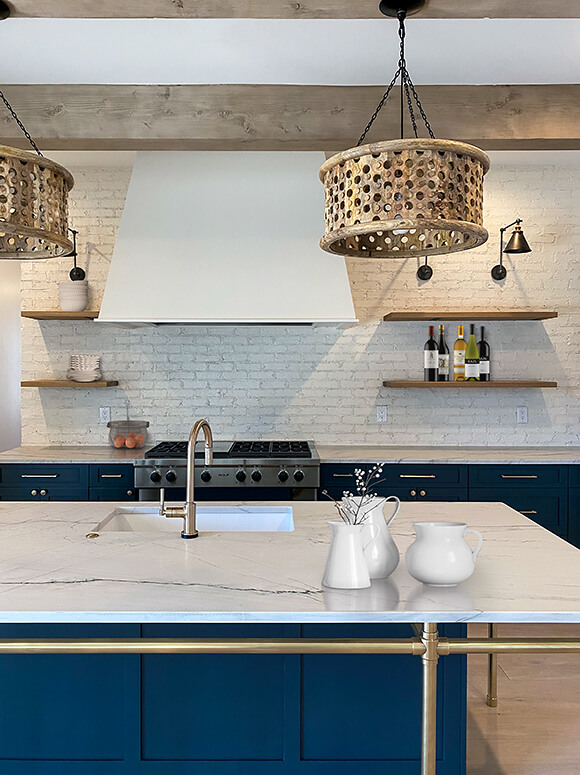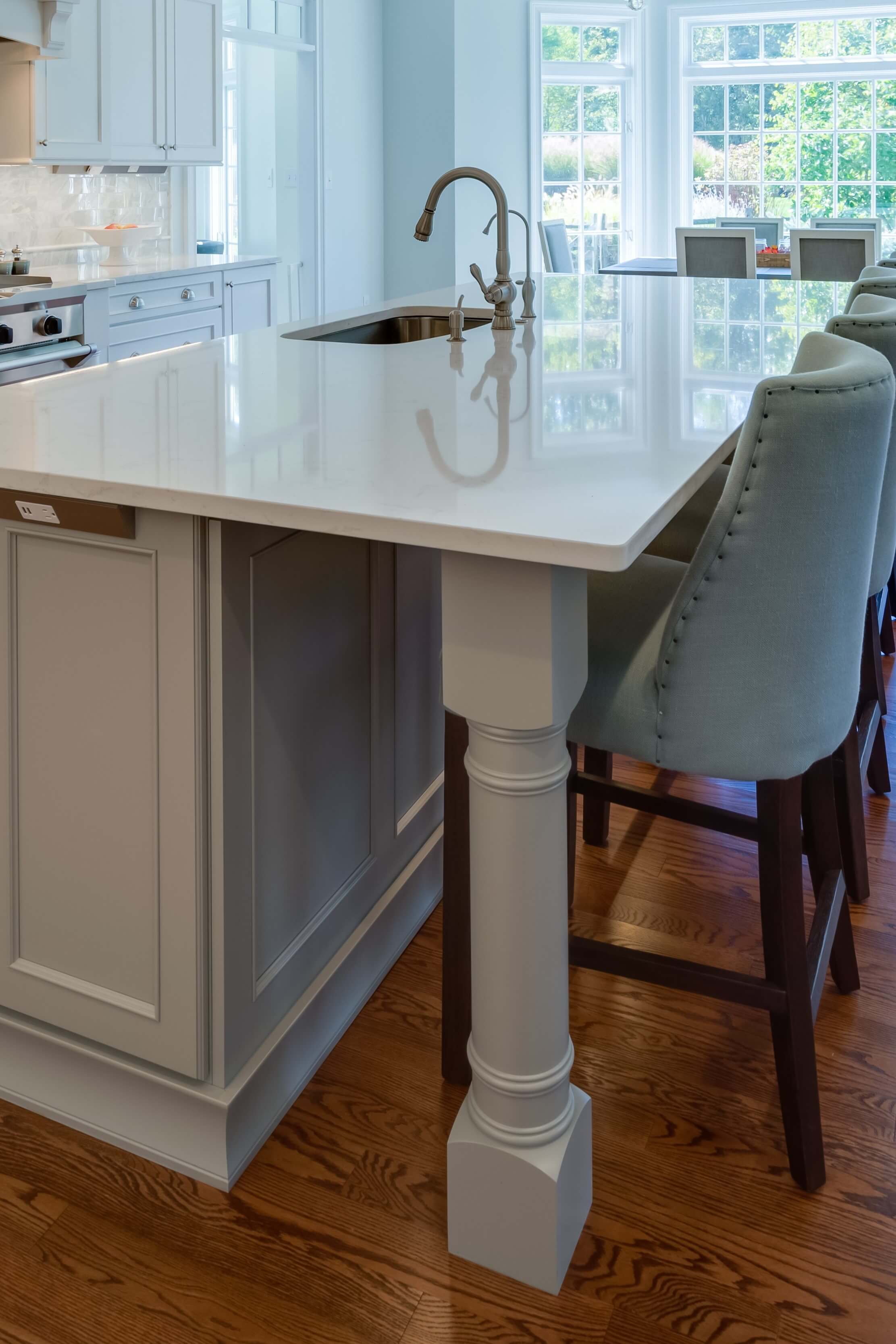Trick Considerations for Discovering the Best Legs For Kitchen Island for Your Design
When picking the perfect legs for your kitchen area island, several essential considerations come right into play that can dramatically affect both capability and visual appeals. The option of product, elevation, and style need to line up with your overall cooking area design to ensure a harmonious appearance.
Determine Your Design Choice
When selecting the ideal legs for your kitchen island,Identifying your design preference is important. The legs of your cooking area island not just serve a practical objective but additionally contribute significantly to the general aesthetic of the space. Determining your design style-- be it modern, rustic, conventional, or commercial-- is crucial.
For a modern-day kitchen, take into consideration streamlined, minimalistic legs that complement open spaces and tidy lines. On the other hand, a rustic setting may take advantage of even more robust, farmhouse-style legs made of recovered materials. Standard cooking areas typically favor turned or ornate legs, which can include a touch of elegance and refinement. An industrial visual could call for metal legs that stress a raw, incomplete appearance.
Furthermore, think about the elevation and proportion of the legs in relationship to the island's surface area. Inevitably, your style choice will certainly influence not just the choice of legs yet likewise the overall harmony of your kitchen area's layout.
Pick the Right Product
Selecting the right product for your kitchen island legs is critical in ensuring both longevity and visual allure. Various materials use distinctive benefits, and the choice commonly reflects your layout choices and useful demands.
Timber is a prominent choice, supplying warmth and flexibility. It can be stained or painted to match your kitchen decor, making it versatile to numerous designs, from rustic to contemporary. Wood might require routine maintenance to maintain its look and stability.

If you look for an one-of-a-kind touch, take into consideration acrylic or glass materials. They can produce an illusion of area and lightness in your cooking area, making them a superb selection for smaller sized locations - Legs For Kitchen Island. Nonetheless, these alternatives may require mindful handling and upkeep to prevent scratches.
Inevitably, the material you choose should line up with your kitchen area's total design, ensuring that the legs offer both decorative and practical functions.
Take Into Consideration Height and Percentages
When developing a kitchen area island, height and proportions play an essential function in ensuring functionality and comfort. The typical elevation for a kitchen island typically varies from 36 to 42 inches, lining up with conventional counter heights or bar heights, specifically. This measurement is vital for balancing with surrounding stools and kitchen counters, making it possible for convenience of usage during meal prep work and social interactions.
Furthermore, the island's percentages should complement the general kitchen area layout. A well-proportioned island needs to not overwhelm the area; instead, it needs to develop a well balanced aesthetic. Consider the proportion between the island's size and size, guaranteeing it provides ample area without crowding the kitchen. A basic standard is to maintain a size of link 24 to 48 inches, facilitating motion and access.
In addition, the elevation of the legs or base can influence the visual appeal and performance. Taller legs might provide a more modern-day, ventilated feel, while shorter ones can evoke a standard, grounded appearance. Eventually, meticulously taking into consideration elevation and proportions will result in a kitchen area island that is both visually appealing and functionally efficient, improving the general style of the area.
Assess Security and Resilience
A kitchen area island's legs must not just complement its elevation and proportions but also give sufficient stability and sturdiness to support daily activities. The legs are vital to the general functionality of the island, as they bear the weight of the countertop and any kind of additional loads, such as devices or food preparation jobs.
When assessing security, it is essential to think about the leg layout and material. As an example, strong metal or strong wood legs typically supply exceptional strength compared to lighter materials like crafted wood or plastic. Additionally, a wider base can improve stability, reducing the risk of wobbling or index tipping during usage.
Toughness is similarly important; the legs need to resist wear and tear from everyday use. Take into consideration finishes that secure versus scratches, damages, and dampness, specifically in a kitchen area atmosphere. In addition, assess the quality of construction, such as fastenings and joints, which can considerably affect the legs' long-lasting performance.
Ultimately, purchasing well-crafted legs that focus on security and resilience will certainly ensure your kitchen island stays a trusted workspace for several years ahead, boosting your cooking experiences while keeping visual charm.
Consider Upkeep and Treatment
Maintenance and treatment are essential factors to consider for making sure the longevity and performance of cooking area island legs. When choosing legs, it is necessary to review the products made use of, as various options require differing degrees of maintenance. For instance, wooden legs may call for periodic refinishing or sealing to protect against moisture damage and scrapes, while metal legs might require routine polishing to preserve their sparkle and prevent rust.
Moreover, the surface used to the legs can influence maintenance demands. A high-gloss covering might be easier to tidy but can show finger prints and scrapes more conveniently than a matte surface. It is advisable to select products and coatings that match your way of life; for example, if you often host celebrations, opt for resilient materials that can hold up against deterioration.
Furthermore, take into consideration the cleansing procedure associated with maintaining these legs. Smooth surfaces typically call for very little initiative, while elaborate designs may build up dirt and crud, requiring more labor-intensive cleansing approaches. Legs For Kitchen Island. Inevitably, considering the maintenance and care required for your picked kitchen area island legs will certainly not only boost their aesthetic appeal but also guarantee their useful honesty in time
Final Thought
Finally, picking the ideal legs for a cooking area island requires careful consideration of different elements, including layout style, product choice, upkeep, height, and stability. Each aspect plays a vital role in guaranteeing that the legs not just enhance the aesthetic allure of the kitchen but additionally give the needed support and durability for daily use. A knowledgeable decision will eventually add to a functional and visually pleasing kitchen setting.
The legs of your kitchen area island not only offer a useful objective but also add significantly to the total visual of the space.Upkeep and treatment are vital factors to consider for making certain the durability and efficiency of kitchen island legs. Wood legs may call for periodic refinishing or securing to stop moisture damage and scratches, while steel legs may need regular polishing to maintain their shine and protect against rust.
Ultimately, factoring in the maintenance and care required for your selected kitchen area Your Domain Name island legs will certainly not just improve their visual charm however additionally guarantee their practical integrity over time.
